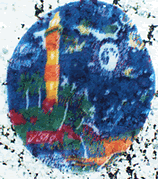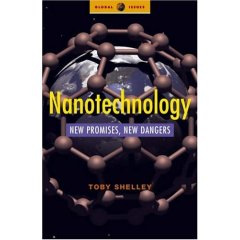From Small Times
IQ Micro to acquire micro/nano diabetes-monitoring technology
July 11, 2007 -- IQ Micro Inc., exclusive licensor of patented electro-osmotic membranes and micro-pumps for the microfluidic technology sector, has entered an agreement in principle with its parent company, Osmolife AS, to acquire all of the issued and outstanding shares of Lifecare AS. A private Norwegian company, Lifecare is developing advanced micro and nanotechnology for the diabetes monitoring market. The proposed transaction is scheduled to close on July 15, 2007.
IQ Micro President and CEO, Johnny Christiansen, said, "With this acquisition, IQ Micro will strengthen its position in the $11 billion worldwide diabetes market by gaining immediate access to the parent company's proprietary technologies. As we continue to commercialize our licensed microfluidics technologies, Lifecare's patented technology will create another important building block in the future of diabetes treatment for the company."
Lifecare has been developing an implantable osmotic sensor for automated, continuous glucose monitoring. The company's proprietary sensor, SENCELL, promises precision and accuracy beyond existing solutions. SENCELL integrates micro and nanofabrication technologies into a tiny device that provides a platform for development of a long-term, in vivo glucose sensor solution to replace conventional, less efficient glucose monitoring and measurement techniques.
Melexis and UMC to deliver chips for automobile applications
July 6, 2007-- Melexis, a Belgium-based manufacturer of automotive semiconductor integrated circuits (ICs), and UMC, a global semiconductor foundry, announced that their successful collaboration has resulted in the delivery of chips using UMC's 0.18um eFlash process and eFlash macro. The ICs are aimed at diversified automobile applications, including automotive sensors. Melexis and UMC have been cooperating on this product for several years, and the chip is currently being shipped to auto-module producers for assembly.
Melexis' sensor ICs include Hall-effect, optical, infrared, and MEMS; communication ICs include low power RF, RFID and Automotive BUS; actuator ICs for electric motors, solenoids, and LEDs; and Application Specific Integrated Circuits (ASICs).
UMC manufactures advanced process ICs for applications spanning every sector of the semiconductor industry. UMC delivers cutting-edge foundry technologies that enable system-on-chip (SoC) designs, including volume production 90nm, 65nm, and mixed signal/RFCMOS.
BSE and MEMS Tech to develop silicon microphones
July 2, 2007—South Korea's BSE Co. Ltd., maker of electret condenser microphones, has signed a memorandum of understanding with MEMS Technology Bhd. The partnership promises to give MEMS Tech's silicon microphones worldwide exposure. The two groups also expect to collaborate on a new range of silicon microphones, combining the acoustics expertise of BSE and MEMS Tech's micro-electro-mechanical system.
BSE is the world's largest electrets condenser microphone maker with an estimated 40% world market share, while Penang-based MEMS Tech is a global supplier of silicon microphones.
IMEC to test nanodevice manufacturing processes with Akrion Velocity
June 20, 2007 ?- IMEC, the independent nanoelectronics research center in Leuven, Belgium, has ordered Akrion Inc.'s 300mm single-wafer surface preparation system, Velocity. IMEC will use the 4-chamber Velocity to develop and test new back- and front-end-of-line process recipes for IC device manufacturing at the 32 nm technology cycle.
Velocity uses stacked process chambers to minimize footprint. It offers 300mm factory automation compliance and a range of advanced technologies focused on the use of controlled physical forces to minimize physical damage while providing effective cleaning. Available subsystems include Goldfinger megasonics, JetStream and JetStream-Nano spray technology, and Sahara surface-tension-gradient dryers.
Project reports that nearly 500 everyday products incorporate nano
May 15, 2007 -- The number of consumer products using nanotechnology has more than doubled, from 212 to 475, in 14 months, says the Project on Emerging Nanotechnologies (PEN). March 2006 is when the group launched what it calls the world's first online inventory of manufacturer-identified nanotech goods.
Clothing and cosmetics top the inventory at 77 and 75 products, respectively. The full list of nanotechnology-based products also includes bedding, jewelry, sporting goods, nutritional and personal care items. According to PEN, + The food and beverages category, including containers and dietary supplements, doubled to 61 products since last year.
+ Nanoscale silver is the most cited nanomaterial used. It is found in 95 products or 20 percent of the inventory. Carbon, including carbon nanotubes and fullerenes, is the second highest nanoscale material cited.
+ Merchandise from 20 countries is now represented. The United States leads internationally with 52 percent or 247 consumer products that contain nanotechnology. East Asia now boasts 123 products, a 58 percent increase over last year.
+ New products in the inventory include the Corsa Nanotech Ice Axe, which uses a steel alloy that claims to be 20 percent lighter and up to 60 percent stronger than conventional steel. There's also MaatShop Crystal Clear Nano Silver, a clear liquid dietary supplement that promises protection against colds, flu, and other diseases including anthrax.
The group says that in 2005 nanotechnology was incorporated into more than $30 billion in manufactured goods. By 2014, Lux Research estimates $2.6 trillion in manufactured goods will incorporate nanotechnology?or about 15 percent of total global output.






